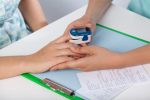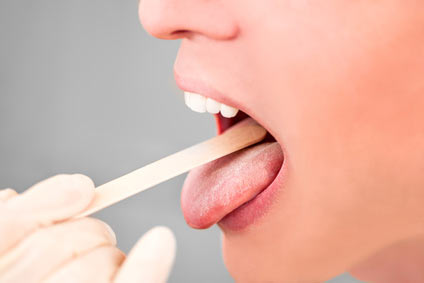Obstructive Sleep Apnea in Children
Symptoms, Causes and Treatments for OSA in Children
Obstructive sleep apnea in children can have more damaging medical consequences than sleep apnea in adults.
Does your child snore? How do you know if your child is just a normal snorer or if he has obstructive apnea? This page will explain how to differentiate the problems.
If your pediatrician tells you not to worry if your child is snoring because the child will outgrow this problem, you should not wait for this to happen. Snoring in children can slow down the normal course of growth and development.
Obstructive sleep apnea in children can cause memory, learning and behavior problems that resemble attention deficit hyperactivity disorder or ADHD:
- irritability
- hyperactivity
- difficulty paying attention
- acting out in school
Though sleep apnea disorder was relatively recently described, it is a common disorder affecting 3% of children 2 to 8 years of age.
But why obstructive sleep apnea in children is so common today, even that is was a generation ago? Well, there are two known reasons:
- more children today have enlarged tonsils and adenois
- obesity is a much more common problem now that a generation ago. One of every five children is obese, and you already know that obesity is associated with snoring and sleep apnea.
Symptoms of Obstructive Sleep Apnea in Children
How can you discover if your child has obstructive sleep apnea?
Snoring is the most obvious symptom of obstructive sleep apnea in children.
So, if your child have heavy and irregular snoring, accompanied by loud gasping and snorting alternating with silence, then is a sign of obstructive sleep apnea.
Sleep apnea in infants usually becomes apparent as a result of color change and bradycardia.
However, in most children, many of the daytime and nightime clinical symptoms signals the condition that may not be so obvious for a parent.
Symptoms during the day:
During daytime, you can see important OSA symptoms in children. However, the daytime symptoms in children can be difficult to notice for many parents:
- daytime fatigue
- learning problems
- hyperactivity and aggressivety
- difficulty waking up
- morning headaches
- inattention
- poor performance at school
- frecquent upper airway infections
- obesity
- cardiovascular problems, such as high blood pressure and hearbeat abnormalities (arrhythmias).
Symptoms during sleep:
While your child is sleeping, you can see other signs of obstructive apnea, such as:
- mouth breathing
- restless sleep
- nocturnal sweating
- nightmares
- parasomnias
- unusual sleep positions
In other words, a child who is hyperactive and who snores or has restless sleep should be evaluated by a sleep specialist to determine if he has sleep apnea.
However, some children with sleep apnea may not be so aggressive; they may simply appear quiet, withdrawn, or very shy.
This quiet and shy behavior may not be perceived as a sign of a problem, even by his parents. They even will love the "good" behavior of their child.
Causes of Obstructive Sleep Apnea in Children
Discover the most common OSA risk factors in children:
- nasal obstruction from deviated septum or from allergies,
- large adenoids or tonsils,
- asthma - allergic reactions very early in life lead to mucosal swelling and enlargement of the pharyngeal region. The presence of these upper airway allergies, during early childhood, will limit the maxillo-mandibular growth and cause a decrease in the size of the upper airway.
- So, if your child is snoring, keep in mind that small upper airways are often associated with increased upper airway resistance during sleep, and this leads to increased breathing efforts and snoring.
- big soft palate,
- small lower jaw
- abnormal maxilomandibular development
- obesity
Treating Obstructive Sleep Apnea in Children
Untreated sleep apnea in children is likely to become worse and in time leads to the same kinds of breathing and heart problems that are seen in adults.
No time should be lost in treating sleep apnea, because the consequences of behavioral problems, poor memory and concentration, can affect a child for the rest of his or her life.
As a parent, the first thing to do is to make a tape recording the sounds of your child's snoring and ask your doctor to see it. He can also refer you to a sleep specialist.
Bottom line... If you suspect that your child has sleep apnea, it should be tested by a sleep specialist as soon as possible.
A pediatric sleep study is evaluated differently than an adult record. Despite the increase in respiratory efforts of the child, he or she may not present with fragmented sleep. This is why it is wise to look for a sleep specialist who is experienced with pediatric sleep disorders.
Surgical treatment of obstructive sleep apnea in children
Because most sleep apnea in children is due to enlarged tonsils and adenoids, the most common treatment is to simply remove them.
Tonsillectomy and adenoidectomy are the standard treatments of pediatric obstructive sleep apnea.
Early studies showed that these procedures can cure over 80% of obstructive sleep apnea causes, and improves the vast majority. However, about one of five children who have adenoidectomy and tonsillectomy will have persistent sleep apnea and need further treatment.
More recent studies suggest that obstructive sleep apnea may persist in 45% of postoperative patients. Why? Maybe because there is not paid enough attention to problems that may be associated with enlarged tonsils and adenoids, such as:
- abnormally long soft palate
- soft tissue infiltration behind the base of the tongue
- abnormal position of the mandible
When maxillofacial abnormalities are clearly related to the presence of obstructive sleep apnea in children, maxillofacial surgery may be considered.
But what are these maxillofacial abnormalities? Can you discover if your child has these problems? Well, you need a "specialist" eye to see that your child has:
- a retroposition of the mandible,
- an abnormally narrow and high-arched palate.
A good advice will be to make an orthodontic investigation before considering maxillofacial or maxillomandibular surgery.
CPAP and bilevel positive airway pressure (BiPAP)
CPAP and BiPAP machines are the most commonly used nonsurgical treatments for children with obstructive sleep apnea.
CPAP is used successfully for children with contraindications for surgery or children with persistent obstructive sleep apnea after surgery.
Children of any age can successfully use CPAP, provided the parents and children are well informed, and have access to skillful follow-up staff.
Tracheotomy
Tracheotomy is indicated for treatment of severe obstructive sleep apnea in children with complicated anatomic or neuromotor issues, when surgical efforts have failed, or when CPAP is not helpful or is impractical.
Good Sleep Habits
If you establish a good sleep habit to your child, he or she will enjoy the benefits of better sleep and a good healthy life.
As a parent, you should be in charge of your child's sleep routine and maintain a regular bedtime and wake-up time appropriate to the child's age.








